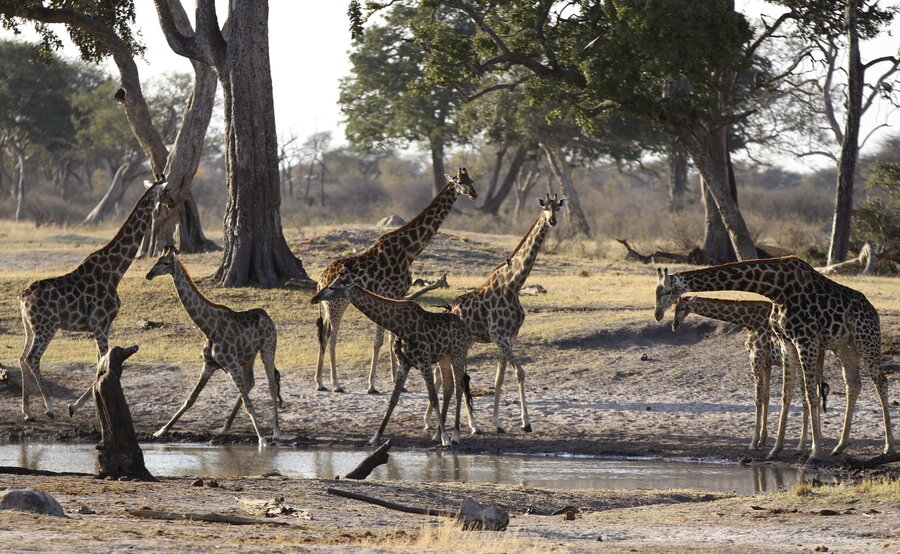Why is this rare giraffe almost extinct?
Loading...
Only 38 Kordofan giraffes remain alive today.
Originally ranging through Cameroon, the Central African Republic, and Sudan, the remaining Kordofans are now sequestered in the Democratic Republic of Congo’s Garamba National Park. Approximately 350 Kordofans roamed the DRC only 20 years ago, but the numbers plunged to 86 by 2003 and then decreased to only 38 in 2016.
Local poachers are said to be responsible for depleting the once prolific populations.
A single giraffe can produce up to 660 pounds of meat, and priced at 30 pounds per pound, one giraffe can produce quite a paycheck. Especially in a country where the gross domestic product per capita measured $231.51 in 2012 – the worst in the world. And the skin of the Kordofan giraffe has distinctive spots, typically fetching a higher price tag on the luxury goods market.
“At the moment the ratio is one male to 2.4 females, which is still sustainable,” Aime Balimbaki, the head of research and monitoring at Garamba National Park, tells the Sunday Express. “But if we have bad luck or if there is a serious menace – even if we lose just five giraffes – then the population may no longer be viable.”
As of Sunday, a petition to President Barack Obama titled “Save the Last 38 Giraffes in Congo” had received over 28,400 signatures.
“[The Congo’s] government likely cannot take on the additional expense of saving the last of its giraffes,” reads the petition. “They need other nations to step up and provide conservationists with the money for better security against poachers, tracking collars, and other equipment they might need to track these wandering animals. The United States often helps other nations in times of need.”
Wildlife advocates hope the petition will raise awareness about the giraffes’ shrinking population.
“It is heartbreaking that this has not gained the media attention it so deserves,” says the UK-based charity Spots and Stripes. “To have a population of only 38 giraffes remaining in the Congo is a disaster for both the species and for conservation.”
And just because the remaining giraffes are under Garamba’s protection doesn’t mean they are safe, explain conservationists.
“[The petition’s] call-to-action contends that Congo is under extreme financial and political distress from caring for the many refugees ‘pouring in from South Sudan,’ and does not have the means to safeguard the remaining 38 giraffes from extinction,” explains EnviroNews. Garamba was already a resource-deprived park, but the petition’s authors say hungry Sudanese refugees wouldn’t think twice about killing a giraffe for its flavorful meat.
And human-induced landscape changes have forced giraffes to roam far and wide to find an adequate food supply, especially in a national park that measures almost 2,000 square-miles. The petition asks President Obama to fund tracking collars for the remaining 38 giraffes, in addition to salary pay so more park staff can be hired to protect the giraffes against both locals and Sudanese refugees.
“This is one of the most trouble-ridden parts of Africa,” Chris Thouless of Save the Elephants told CTV News, referencing Africa’s second-oldest national park. “Simply, Garamba’s survival is an absolute miracle.”
Despite the park’s warring neighbors, hungry poachers, and funding needs, the non-profit organization African Parks that took over Garamba’s management in 2005, continues to fight for a brighter future for Garamba and its residents.
Erik Marav, 30-year manager of Garamba, says of the park: “It’s such a special area in such an unlikely place.”








